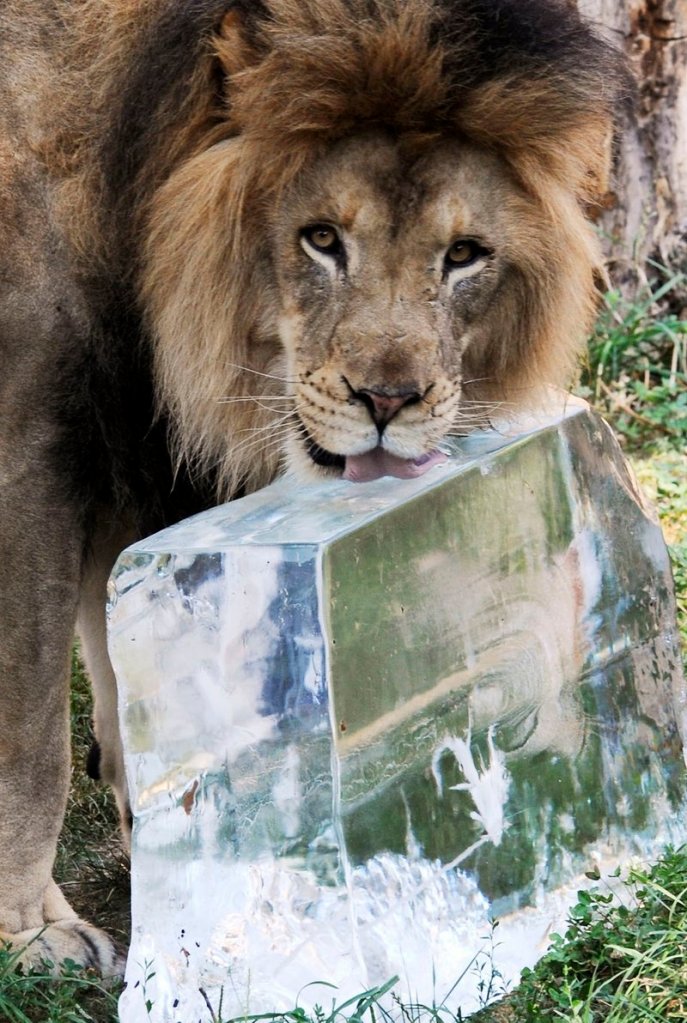CHICAGO – If the extreme heat and humidity lingering over much of the nation feels like a steam bath, it’s because the same principles are at work in the atmosphere.
Vast amounts of warmth and moisture have become trapped under a huge “heat dome,” bringing record-breaking temperatures and thick, topical air to scores of cities from the Plains to the Ohio Valley. Now the system is moving east to spread the misery to some of the country’s most densely populated areas through the weekend.
Mainers will see temperatures rise into the 90s Thursday, near record levels especially in southern York County, where it will feel hotter than 100 degrees.
The National Weather Service in Gray has posted a heat advisory with forecasts for inland areas of Maine in the mid-90s and the Portland area and coastal sections with a high right at 90 degrees.
“We’re also expecting very humid conditions, with dew points in the upper 60s, very sticky and muggy,” said Margaret Curtis, of the National Weather Service in Gray. “That makes the heat index feel like it’s over 100 for interior York County.”
A hot, moist air mass is swirling up from the Deep South, creating “one of those days you probably just stand outside and already it feels wet and sticky,” Curtis said. “I definitely recommend the beach.”
The rising hot air will draw in fresh breezes near the ocean, cooled off by water temperatures in the mid-60s, Curtis said.
“We have a built-in air conditioner off the coast,” she said.
Other parts of the nation sweltered on Wednesday and more was on the way.
With temperatures hovering around 100, Jeff Grembocki and other construction workers prepared to pour concrete for a walkway improvement project near downtown Kansas City. Empty Gatorade bottles lay strewn across their job site.
Grembocki said the heat saps his energy so much that he falls asleep soon after getting home. He only rouses for a couple of hours to watch TV before going back to bed.
“The air conditioning, when it hits you, it’s all you can do to stay awake,” he said.
The heat dome forms when a high pressure system develops in the upper atmosphere, causing the air below it to sink and compress because there’s more weight on top. That raises temperatures in the lower atmosphere, said Eli Jacks, a meteorologist with the National Weather Service in Silver Spring, Md.
The dome of high pressure also pushes the jet stream and its drier, cooler air, farther north — it’s now well into Canada — while hot, humid air from the Gulf of Mexico circulates clockwise around the dome, traveling farther inland than normal.
Combined with generally clear skies and the sun’s higher summertime angle, “it gets really hot,” Jacks said.
The cruel result: eye-popping heat index readings measuring temperature combined with humidity. In Newton, Iowa, for example, it was 98 degrees Wednesday with a heat index that made it feel like 115. A day earlier, Newton’s heat index hit 129 degrees.
In Indianapolis, the thermometer read 98 degrees but it felt like almost 114. Chicago’s Midway Airport recorded a high of 99 degrees, which felt like 108. Humidity levels in some of the hottest cities ranged from 40 percent to 60 percent.
The formation of the dome also explains why conditions in, say, North Dakota aren’t much different this week than in Houston. The big difference is that people in Houston are accustomed to hot weather. Those in the north are not.
“In places where the highest temperature you ever expect is in the 80s and you’re at 102, there are big health concerns,” because fewer people have air conditioning or fans, Jacks said. “Heat is the No. 1 killer out of all weather hazards.”
What’s more, because of the humidity, even nighttime brings little relief.
Humidity makes the weather feel far hotter because the body, which cools itself by perspiring, has to work harder when the air is already moist.
“It’s harder to cool down,” said Jannie Ferrell, a National Weather Service meteorologist.
The sweltering weather served to make life even more uncomfortable for people displaced by the flooding of the Souris River in Minot, N.D., where about 150 people are living in a tent city outside the an ice rink.
“The RVs all have air conditioners, but the tent folks have been moving their tents around trying to find shade,” said Chuck Emery, manager of the Maysa Arena. The rink’s air-conditioned basement has been converted into a kennel for campers’ pets.
Although heat domes are not rare, this one is unusually large and long-lasting. It began three days ago and may persist for seven to 10 days in some locations, meteorologists said.
On Wednesday, it had begun moving out of Texas and the Dakotas, headed east and northeast. Temperatures today in Washington were forecast to hit 100, and the heat could linger for days along the Atlantic seaboard.
Thunderstorms can develop around the perimeter of the dome — called the “ring of fire” — bringing temporary relief to some areas. But this dome is so large that the heat rebuilds quickly, said Kevin Birk, a National Weather Service meteorologist in Illinois.
No widespread deaths have been reported, but the heat sent dozens of people to hospitals and disrupted many routine activities.
As hot air blew over the cooler waters of Lake Michigan on Tuesday, a thick fog shrouded many of Chicago’s beaches. Lifeguards had to turn away swimmers because they could not see beyond the water’s edge.
A Veterans Affairs hospital in Fargo, N.D., had to reschedule more than 50 surgeries after cooling systems struggled to keep up with the weather. Some floors and other surfaces became wet, potentially compromising the sterile environment needed to operate.
In Detroit, more than 70 schools without air conditioning were to close Wednesday afternoon. Power outages and mechanical problems closed several others.
Relief is on the way. Cooler air should begin moving into the Plains states this weekend, as a strong pool of air from the jet stream begins to push hot air out of the way in the Dakotas and into Minnesota before making its way east.
By Monday, temperatures in many places will drop into the mid-80s, although cities in the East could still be sweltering.
“This is really an exceptional event, I think it’s fair to say … in terms of scope and duration,” Jacks said.
Back in Kansas City, the construction crew has been starting around 5:30 a.m. to get as much work done as possible before the hottest hours of the day.
Crew member Dan Danuser said he guzzles plenty of water while on the job. When he gets home, he retreats to a dark room.
“It’s hard with all the asphalt and concrete around,” Danuser said. “It’s different when you are out on grass and open areas. But when you get in town, there is no breeze, and the asphalt just makes everything hotter.”
Staff Writer David Hench contributed to this report.
Send questions/comments to the editors.






Success. Please wait for the page to reload. If the page does not reload within 5 seconds, please refresh the page.
Enter your email and password to access comments.
Hi, to comment on stories you must . This profile is in addition to your subscription and website login.
Already have a commenting profile? .
Invalid username/password.
Please check your email to confirm and complete your registration.
Only subscribers are eligible to post comments. Please subscribe or login first for digital access. Here’s why.
Use the form below to reset your password. When you've submitted your account email, we will send an email with a reset code.